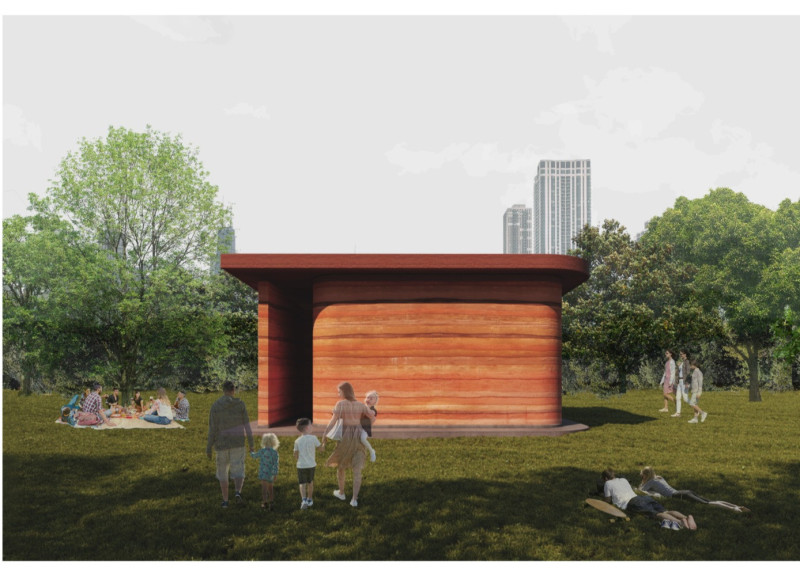5 key facts about this project
The Penumbra Pavilion is located in Ibirapuera Urban Park in São Paulo, Brazil, providing a space for reflection and interaction away from the city's hustle. It combines exhibition areas with an engaging architectural experience that explores the art of building with soil. The design emphasizes sustainability and the use of historical construction techniques, fostering a deep connection between the structure and its natural surroundings.
Rammed Earth Walls
The pavilion's rammed earth walls serve not only as structural elements but also as the centerpiece of the design. These walls are framed by a zenith linear opening, allowing light to enter and create an interplay between brightness and shadow. As the sun moves across the sky, the texture and color of the earth change, offering visitors a visual experience that reflects the passage of time throughout the day and seasons.
Framework and Structure
The pavilion features a framework constructed from wood, with reinforced shutters providing support and stability. Adjustable wedges allow for precise alignment, ensuring the integrity of the space. Steel angle irons are integrated into the design to enhance the structure’s strength. The concrete foundation includes a waterproof vapor barrier, contributing to the durability of the building. In addition, rigid insulation and compacted sand-gravel materials enhance comfort within the pavilion.
Spatial Organization
The layout of the pavilion is carefully designed to create an inviting atmosphere. Exhibition spaces are arranged to facilitate exploration and interaction, while maintaining a connection with the surrounding landscape. The design allows for a sense of refuge, providing a place where visitors can contemplate and appreciate both the architecture and the environment. Each element works together to create a unified experience.
The pavilion’s design captures attention through its response to light and space, allowing visitors to engage with the materiality of the walls and the changing ambiance throughout the day. This connection to both nature and the concept of building with earth invites a deeper appreciation for architectural simplicity and sustainability.



















































